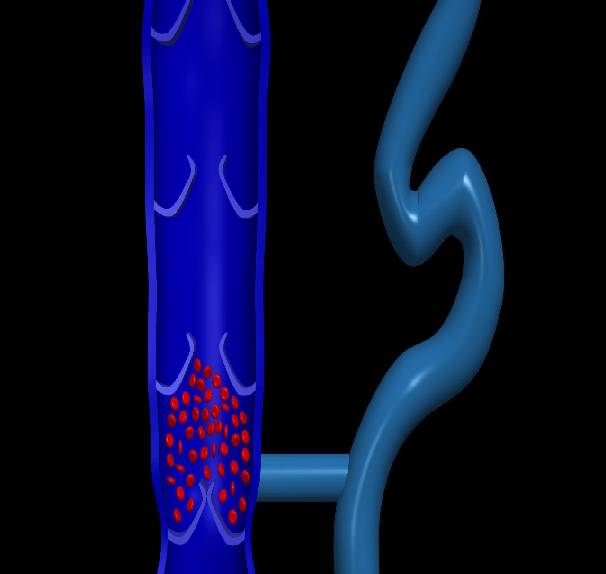Varicose & Spider Vein Treatment in Oceanside
Nonsurgical Venous Disease Interventions
Veins are thin-walled blood vessels that carry blood back to the heart. Venous diseases are divided into two main categories: Superficial and Deep venous diseases.
Superficial venous diseases: Superficial venous insufficiency leads to both Varicose veins and Spider veins.
- Varicose veins: These are enlarged and twisted veins which can be uncomfortable and cosmetically not appealing.
- Spider veins: These are tiny varicose veins that look like spider webs. They are blue or red in color and are just beneath the surface of the skin.
- What causes varicose veins? Increased pressure within the superficial veins leads to damage to the veinous valves and blood backs up within the vein, causing them to enlarge. Sitting and standing can worsen the blood pooling in the incompetent varicose veins.
- What are the risk factors for varicose veins?
- Overweight or obesity
- Older age
- female gender
- sedentary lifestyle
- Leg trauma
- Pregnancy
- Smoking
- Taking oral contraceptive pills or hormone replacement
- What are the symptoms of varicose veins?
- Pain
- Skin discoloration
- Heaviness
- Burning
- Rash
- Ulceration and wounds
- How are varicose veins diagnosed?
- History
- Physical examination
- Ultrasound of the legs
- What is the treatment for varicose veins?
- No treatment may be needed if patient is asymptomatic from varicose veins.
- Elevation of the legs: 3-4 times daily for 15 minutes can improve leg swelling and pain.
- Compression stockings: Can be effective if worn consistently on daily basis. They prevent blood pooling because of incompetent superficial veins.
- Sclerotherapy: The incompetent and enlarge varicose veins are injected with a medication that cause these veins to close. Surrounding normal veins then carry the blood back to the heart.
- Thermal ablation: Lasers or radiofrequency energy is used to deliver heat that destroys the wall of the varicose vein, subsequently closing them.

- Deep venous insufficiency: Deep venous thrombosis (DVT) is the main underlying cause of chronic deep venous insufficiency.
- What are the risk factors for DVT?
- Age
- Prolonged sitting or bedrest.
- Injury or surgery.
- Pregnancy.
- Birth control pills.
- Being overweight or obese.
- Smoking.
- Cancer.
- Heart failure.
- Inflammatory bowel disease.
- A personal or family history of DVT or Pulmonary Embolism (PE).
- Genetics.
- What are the risk factors for DVT?
- What are the complications of DVT:
- Pulmonary embolism (PE): PE is a potentially life-threatening complication associated with DVT. PE occurs when blood clots travel to your lungs usually from legs or pelvis. If you have sudden shortness of breath, chest pain while inhaling or coughing, rapid breathing, rapid pulse, feeling faint or fainting, and coughing up blood, you may be suffering from PE.
- Post Thrombotic Syndrome: A chronic complication of deep venous thrombosis, also known as postphlebitis syndrome. It is most commonly seen with DVT that is proximal in the groin or pelvic veins.
- Symptoms include chronic leg pain and swelling, skin discoloration and ulcerations, feeling of heaviness.
- What are the complications of DVT:
If you have symptoms consistent with superficial or deep venous disease, please contact us At North County Vascular & Interventional for a consultation with one of our vascular experts in venous diseases.
